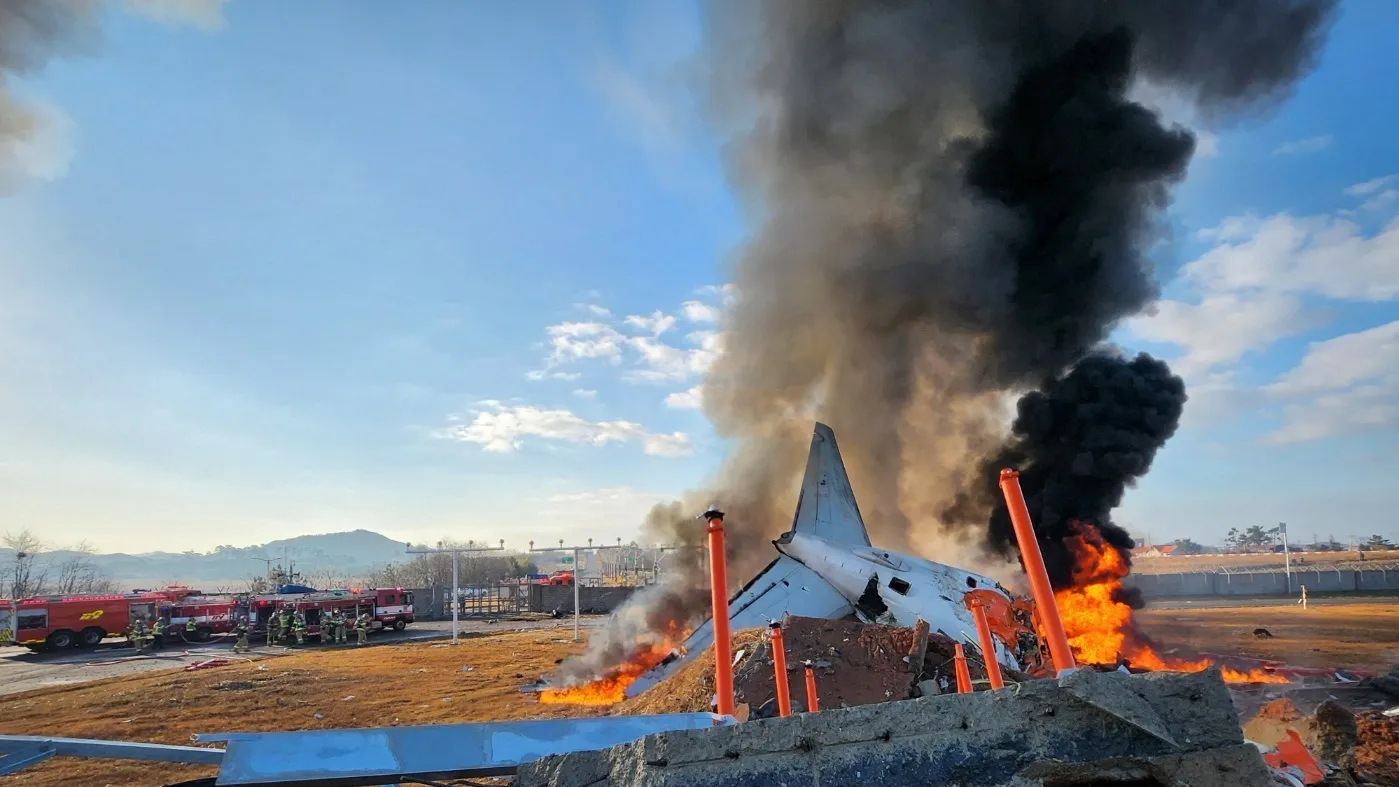| korea airplane crash |
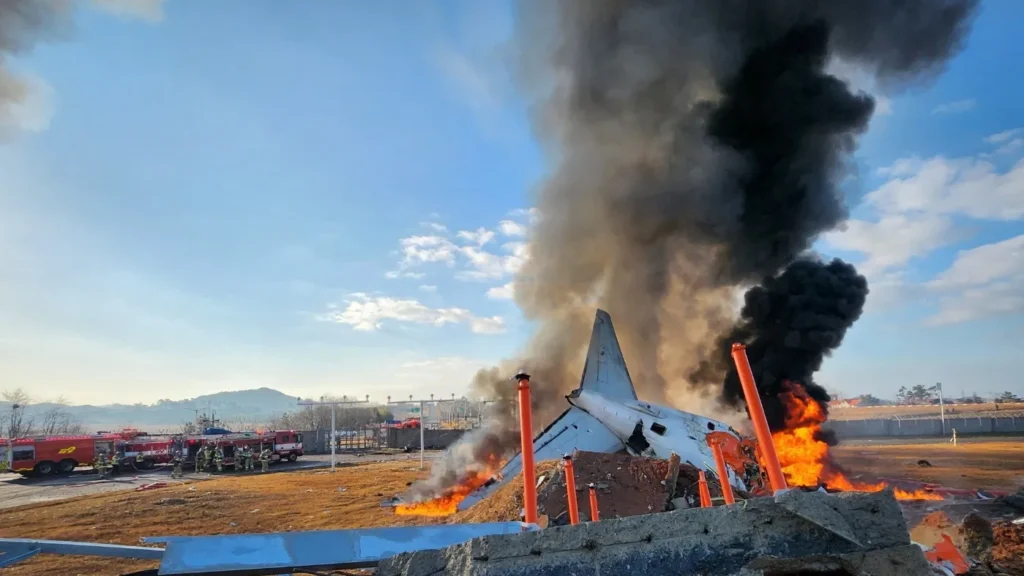
South Korea is mourning one of its darkest days as the nation grapples with its worst airline disaster to date. At least 174 people lost their lives in a catastrophic crash that has sent shockwaves not only across the country but around the world.
The Tragic Incident
When and Where It Happened
The tragic event unfolded on a seemingly normal morning. The flight, operated by a leading South Korean airline, was scheduled for a routine domestic trip. However, disaster struck as the plane attempted to land at the crowded Incheon International Airport amidst worsening weather conditions.
Details of the Flight
The aircraft, a wide-body jet carrying 234 passengers and crew members, was nearing the end of its flight from Jeju Island to Seoul. Visibility was poor due to dense fog and heavy rain, raising serious questions about the decision to proceed with landing attempts under such risky circumstances.
The Moment Disaster Struck
As the plane approached the runway, it suddenly veered off course. Witnesses reported hearing a deafening explosion followed by plumes of thick black smoke. The aircraft crashed into a nearby embankment, breaking into multiple sections. Emergency crews were immediately dispatched to the scene.
Casualties and Survivors
Death Toll Details
Authorities have confirmed that 174 individuals perished in the crash, making it the deadliest aviation disaster in South Korea’s history. Among the dead were passengers of various nationalities, including children and foreign tourists.
Survivor Accounts
Survivors described scenes of chaos and terror. One survivor recounted, “There was a loud bang, and the plane shook violently. Then the cabin filled with smoke. People were screaming, trying to find the exits.”
Rescue Operations
Rescue teams battled against time and hazardous conditions to reach trapped passengers. Despite the heroic efforts, many lives were lost before they could be reached. Several survivors were pulled from the wreckage with severe injuries.
Causes of the Disaster
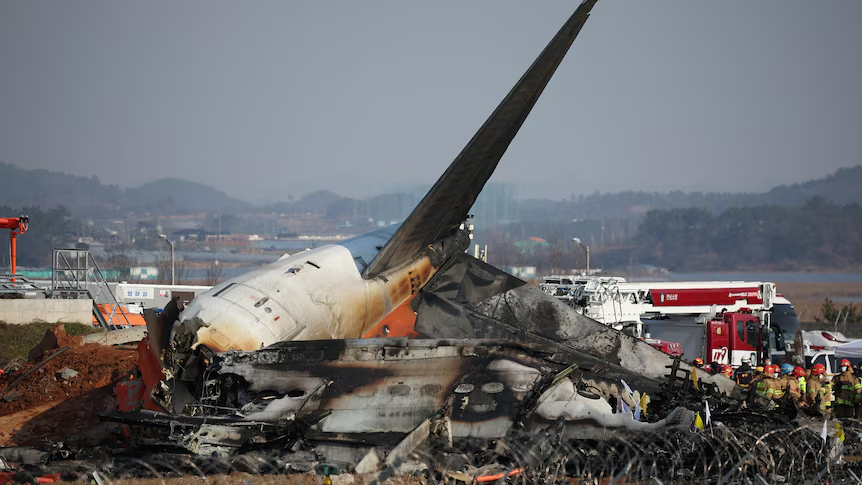
Preliminary Investigations
Preliminary investigations suggest that poor weather and possible pilot error played a role. The exact cause, however, remains under investigation.
Possible Contributing Factors
Mechanical failure, miscommunication with air traffic control, and systemic failures in safety protocols are all being closely examined by aviation authorities.
Historical Context
Comparison with Previous Airline Disasters in South Korea
While South Korea has faced airline tragedies before, none have reached this scale. The Asiana Airlines crash of 2013, which resulted in 3 fatalities, now pales in comparison.
The Worst Aviation Accident in South Korea’s History
This disaster has officially surpassed all previous incidents in terms of loss of life, making it a grim milestone in the nation’s aviation history.
Emergency Response
How Authorities Responded
South Korean authorities launched an immediate full-scale emergency response. Hospitals across Seoul prepared for mass casualties, while emergency personnel worked around the clock at the crash site.
Role of First Responders
Firefighters, paramedics, and police officers risked their lives to save passengers. Many worked through dangerous conditions, including fires and potential secondary explosions.
International Assistance
Neighboring countries and global aviation organizations offered their condolences and assistance. Some even dispatched experts to support the investigation.
Investigation and Findings
Agencies Involved
Multiple agencies, including South Korea’s Ministry of Land, Infrastructure, and Transport, as well as international aviation safety bodies, are involved in the investigation.
Black Box Data
The recovery of the aircraft’s black boxes has provided crucial data. Initial analysis is ongoing, but early indications point towards a combination of human error and environmental factors.
Early Findings
Investigators are focusing on the aircraft’s approach path, the decisions made by the flight crew, and possible malfunctions in landing gear or navigation systems.
Impact on South Korean Aviation
Immediate Grounding of Flights
The disaster prompted South Korea to temporarily ground certain aircraft models and reevaluate landing protocols in poor weather.
Policy and Safety Reviews
Government officials have called for comprehensive reviews of aviation safety policies, with particular attention to training, equipment, and crisis management procedures.
Changes in Regulations
New regulations are expected to tighten oversight of pilot qualifications, aircraft maintenance, and air traffic control coordination.
Emotional Toll
National Mourning
The entire nation observed a period of mourning. Flags were flown at half-staff, and memorial services were held nationwide.
Families of Victims
Families are devastated, many gathering at local hospitals and temporary crisis centers for news about their loved ones.
Psychological Support Services
Counseling and psychological support have been made available to survivors and victims’ families to help them cope with the trauma.
Political and Global Reactions
Government Statements
The President of South Korea addressed the nation, vowing a thorough investigation and promising support for the victims’ families.
International Condolences
World leaders expressed their condolences, with many offering to assist in any way possible.
Airline Industry Responses
Airlines worldwide are monitoring the investigation closely, assessing how the findings might affect international aviation standards.
Media Coverage
How the Disaster Was Reported
Media outlets provided around-the-clock coverage, with live updates from the crash site and interviews with survivors and officials.
Public Reaction on Social Media
Social media was flooded with expressions of grief and support, while some criticized the airline and government’s handling of the disaster.
Role of Journalism in Such Crises
Journalists played a crucial role in disseminating accurate information while balancing sensitivity towards the victims and their families.
Legal Implications
Lawsuits and Compensations
Several lawsuits are already being prepared by the victims’ families. The airline faces potentially enormous compensation claims.
Airline Responsibility
The airline’s responsibility will be determined based on the final investigation results, which may lead to criminal charges if negligence is proven.
Government Accountability
The government’s role in aviation oversight is also under scrutiny, with some accusing officials of complacency.
Lessons Learned
What Can Be Improved
This disaster underscores the need for improved pilot training, better weather monitoring systems, and stricter operational protocols.
Importance of Safety Protocols
Adhering to safety protocols can often be the difference between life and death in aviation. This tragedy serves as a sobering reminder.
Technological Advancements
Emerging technologies such as AI-assisted landing systems and real-time weather updates could help prevent future accidents.
The Road to Recovery
Memorials and Tributes
Permanent memorials are being planned to honor the victims and ensure their memories are never forgotten.
Steps Towards Healing
Community support groups and national solidarity efforts aim to help survivors and families navigate the long road to recovery.
Long-Term Consequences
The disaster will have lasting impacts on South Korea’s aviation industry, public trust, and government policies.South Korea is mourning one of its darkest days as the nation grapples with its worst airline disaster to date. At least 174 people lost their lives in a catastrophic crash that has sent shockwaves not only across the country but around the world.
The Tragic Incident
When and Where It Happened
The tragic event unfolded on a seemingly normal morning. The flight, operated by a leading South Korean airline, was scheduled for a routine domestic trip. However, disaster struck as the plane attempted to land at the crowded Incheon International Airport amidst worsening weather conditions.
Details of the Flight
The aircraft, a wide-body jet carrying 234 passengers and crew members, was nearing the end of its flight from Jeju Island to Seoul. Visibility was poor due to dense fog and heavy rain, raising serious questions about the decision to proceed with landing attempts under such risky circumstances.
The Moment Disaster Struck
As the plane approached the runway, it suddenly veered off course. Witnesses reported hearing a deafening explosion followed by plumes of thick black smoke. The aircraft crashed into a nearby embankment, breaking into multiple sections. Emergency crews were immediately dispatched to the scene.
Casualties and Survivors
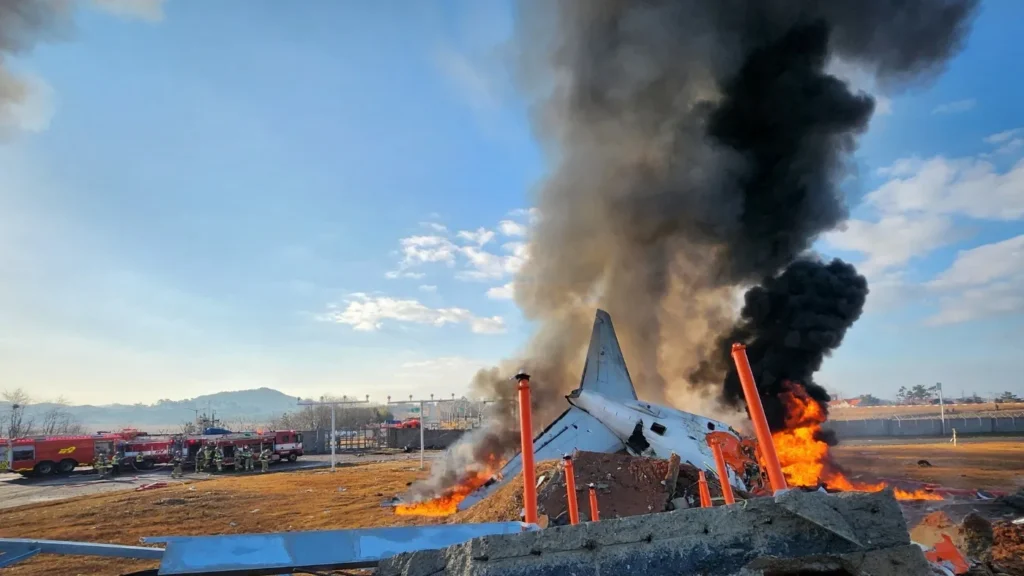
Death Toll Details
Authorities have confirmed that 174 individuals perished in the crash, making it the deadliest aviation disaster in South Korea’s history. Among the dead were passengers of various nationalities, including children and foreign tourists.
Survivor Accounts
Survivors described scenes of chaos and terror. One survivor recounted, “There was a loud bang, and the plane shook violently. Then the cabin filled with smoke. People were screaming, trying to find the exits.”
Rescue Operations
Rescue teams battled against time and hazardous conditions to reach trapped passengers. Despite the heroic efforts, many lives were lost before they could be reached. Several survivors were pulled from the wreckage with severe injuries.
Causes of the Disaster
Preliminary Investigations
Preliminary investigations suggest that poor weather and possible pilot error played a role. The exact cause, however, remains under investigation.
Possible Contributing Factors
Mechanical failure, miscommunication with air traffic control, and systemic failures in safety protocols are all being closely examined by aviation authorities.
Historical Context
Comparison with Previous Airline Disasters in South Korea
While South Korea has faced airline tragedies before, none have reached this scale. The Asiana Airlines crash of 2013, which resulted in 3 fatalities, now pales in comparison.
The Worst Aviation Accident in South Korea’s History
This disaster has officially surpassed all previous incidents in terms of loss of life, making it a grim milestone in the nation’s aviation history.
Emergency Response
How Authorities Responded
South Korean authorities launched an immediate full-scale emergency response. Hospitals across Seoul prepared for mass casualties, while emergency personnel worked around the clock at the crash site.
Role of First Responders
Firefighters, paramedics, and police officers risked their lives to save passengers. Many worked through dangerous conditions, including fires and potential secondary explosions.
International Assistance
Neighboring countries and global aviation organizations offered their condolences and assistance. Some even dispatched experts to support the investigation.
Investigation and Findings
Agencies Involved
Multiple agencies, including South Korea’s Ministry of Land, Infrastructure, and Transport, as well as international aviation safety bodies, are involved in the investigation.
Black Box Data
The recovery of the aircraft’s black boxes has provided crucial data. Initial analysis is ongoing, but early indications point towards a combination of human error and environmental factors.
Early Findings
Investigators are focusing on the aircraft’s approach path, the decisions made by the flight crew, and possible malfunctions in landing gear or navigation systems.
Impact on South Korean Aviation
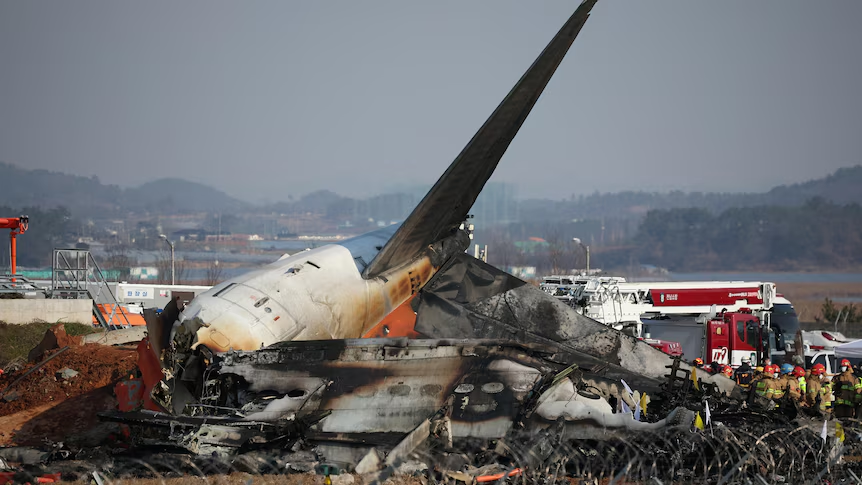
Immediate Grounding of Flights
The disaster prompted South Korea to temporarily ground certain aircraft models and reevaluate landing protocols in poor weather.
Policy and Safety Reviews
Government officials have called for comprehensive reviews of aviation safety policies, with particular attention to training, equipment, and crisis management procedures.
Changes in Regulations
New regulations are expected to tighten oversight of pilot qualifications, aircraft maintenance, and air traffic control coordination.
Emotional Toll
National Mourning
The entire nation observed a period of mourning. Flags were flown at half-staff, and memorial services were held nationwide.
Families of Victims
Families are devastated, many gathering at local hospitals and temporary crisis centers for news about their loved ones.
Psychological Support Services
Counseling and psychological support have been made available to survivors and victims’ families to help them cope with the trauma.
Political and Global Reactions
Government Statements
The President of South Korea addressed the nation, vowing a thorough investigation and promising support for the victims’ families.
International Condolences
World leaders expressed their condolences, with many offering to assist in any way possible.
Airline Industry Responses
Airlines worldwide are monitoring the investigation closely, assessing how the findings might affect international aviation standards.
Media Coverage
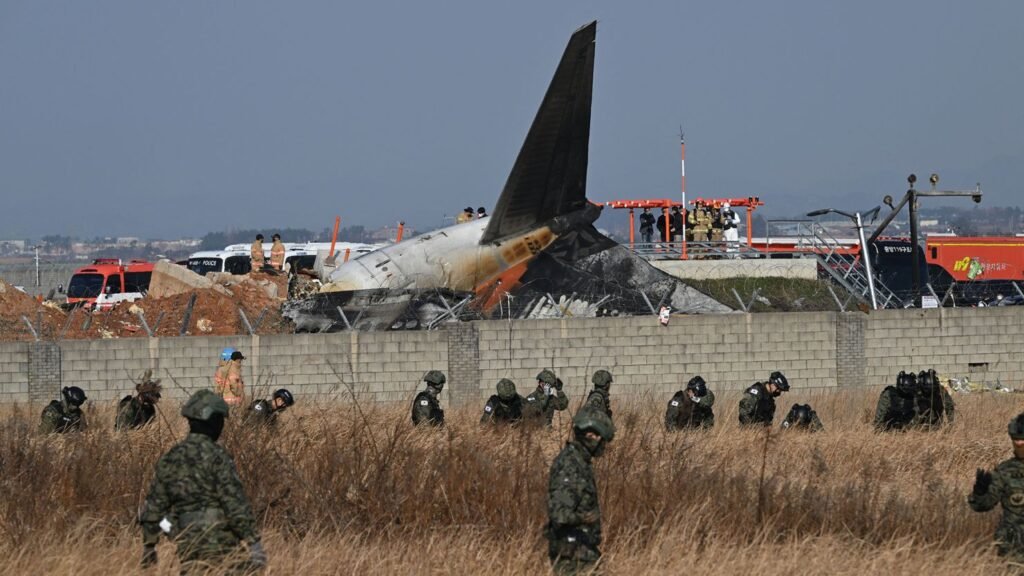
How the Disaster Was Reported
Media outlets provided around-the-clock coverage, with live updates from the crash site and interviews with survivors and officials.
Public Reaction on Social Media
Social media was flooded with expressions of grief and support, while some criticized the airline and government’s handling of the disaster.
Role of Journalism in Such Crises
Journalists played a crucial role in disseminating accurate information while balancing sensitivity towards the victims and their families.
Legal Implications
Lawsuits and Compensations
Several lawsuits are already being prepared by the victims’ families. The airline faces potentially enormous compensation claims.
Airline Responsibility
The airline’s responsibility will be determined based on the final investigation results, which may lead to criminal charges if negligence is proven.
Government Accountability
The government’s role in aviation oversight is also under scrutiny, with some accusing officials of complacency.
Lessons Learned
What Can Be Improved
This disaster underscores the need for improved pilot training, better weather monitoring systems, and stricter operational protocols.
Importance of Safety Protocols
Adhering to safety protocols can often be the difference between life and death in aviation. This tragedy serves as a sobering reminder.
Technological Advancements
Emerging technologies such as AI-assisted landing systems and real-time weather updates could help prevent future accidents.
The Road to Recovery
Memorials and Tributes
Permanent memorials are being planned to honor the victims and ensure their memories are never forgotten.
Steps Towards Healing
Community support groups and national solidarity efforts aim to help survivors and families navigate the long road to recovery.
Long-Term Consequences
The disaster will have lasting impacts on South Korea’s aviation industry, public trust, and government policies.

